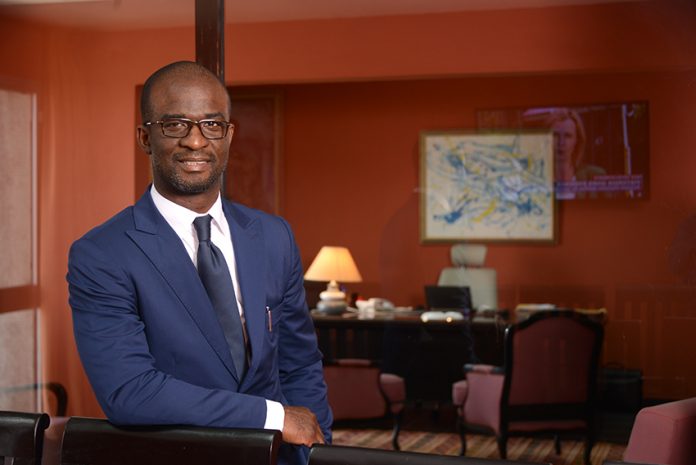How to assess the capacity of African states to repay their debt? What attitude should be adopted between bilateral creditors and financial markets? The explanations of Bloomfield Ratings allow us to understand the judgment of rating agencies.
Aside from high-income countries, African countries are in debt to the tune of $582 billion. This debt was only $268 billion five years ago. At that time, debt servicing was not a problem.
What about today? So ask Stanislas Zézé and Soraya Diallo, respectively president and senior vice-president of Bloomfield Ratings, in a virtual conference.
The two experts explain the approach of a rating agency – the work of which is questioned, today, in Africa. Judging the “sustainability” of the debt, that is to say the ability of states to repay, is not just a function of the debt / GDP ratio.
Agencies must make the effort to assess the quality of debt management, the quality of the institutions responsible for it. “We analyze macroeconomic, social and demographic data. We see what the constraints are in terms of development, budget, for each country”, explains Stanislas Zézé. Above all, “we have to make sure that there is a suitable institutional framework”.
For example, he notes that several African countries are calling for reforms to improve their ranking in the World Bank’s Doing Business.
Commendable efforts, “but do institutions have the capacity to implement these reforms appropriately?” He wonders. An agency like Bloomfield Ratings appreciates how public finances are managed, how taxes are collected and spent, etc. “We also appreciate the consistency of the needs financed, the expenditure circuit must be secure”, explains Soraya Diallo.
Investor perception will not stop on the figures, but on all the strategies carried out and the management of public finances.
The financial market trap!
Experience shows that in addition to expenditure, it is necessary to analyze the revenue profile of economies. A country whose income is too dependent on raw materials will be judged more harshly than a diversified economy.
The debt situation of African countries has changed in recent years. States have tended to favor commercial debts, that which is taken on the markets, because the constraints are less. “This logic is a trap”: when all is well, the trade debts are repaid and they are beneficial.
But when the going gets tough, they close in on borrowers. It is obviously more difficult to negotiate with an anonymous private creditor than with an institution.
On the expenditure side, countries sometimes made mistakes: they spent a lot – and got into debt – to finance infrastructure. Very good, but they underestimated the costs of maintaining and operating these infrastructures, resulting in additional costs and debt. “Hence a certain headlong rush towards debt, made possible by the ease of borrowing on the markets”, observe the experts.
The debt market is expanding, with products like sukuks, with the ability to borrow in both local and foreign currencies. The more the needs can be met in local currency (eg African builders or suppliers of materials) the healthier it is to borrow in local currency, experts advise.
However, some African countries have turned to China, which simultaneously offered the services of its companies and payment facilities. Africa is exposed to the tune of $140 billion to China. This is because the conditions are flexible. “Countries got into the fairly readily available money trap, borrowing more than they needed.”
Some countries have even pledged loans on infrastructure, such as ports. If something goes wrong, they risk losing control! “This collateralization of infrastructure, essential to economies, is a very risky bet.”
Several types of creditors!
Likewise, some oil-producing countries have pledged debt against a percentage of future oil industry revenues. When the price per barrel falls, part of the low income, which is already insufficient, must be devoted to repaying the debt: mechanically, this debt therefore remains very high. Chad, for example, has fallen into this trap.
Gradually, countries have therefore diversified their creditors. They moved away from public (Paris Club) or private (London Club) bilateral creditors.
These two “clubs” were known because they acted in lobbying. Today, the financing terms of new creditors are not always known, which increases uncertainty in the eyes of markets and rating agencies.
African countries therefore have fairly substantial commitments. According to Bloomfield’s estimates, South Africa has $180 billion in debt stocks, Egypt $100 billion, Morocco 49 billion, Tunisia 40 billion, Côte d’Ivoire 14 billion, DR Congo 12 billion.
It is clear that African countries – not all of them – are finding it increasingly difficult to repay, the current crisis only accentuating the phenomenon.
Some countries have called for a moratorium, others are even considering calling for a cancellation. Attention, warns Bloomfield Ratings, “in the logic of credit, these measures will have an impact on the credibility of each country”.
These moratorium requests demonstrate the capacity for non-repayment … However, if we are addressing the markets, we must not create an environment of losses for creditors, especially for private individuals. For their part, multilateral creditors, admittedly more committed to a logic of development aid, will impose sometimes painful choices on indebted countries.
We know that African economies are less resilient, and therefore their debt less sustainable because they are less diversified and do not transform their raw materials enough.
This situation further complicates access to finance. African countries are very dependent on the outside, as evidenced by the consequences of border closures.
At the same time, countries like the United States have a tendency towards isolationism. “Africans need to find their own solutions. The priority should be South-South collaboration,” insists Stanislas Zézé. Therefore, the AfCFTA (African Continental Free Trade Area) is “an excellent opportunity, it still needs to be implemented”.
Benin, a good student!
The indebtedness has evolved into the external debt. Foreign currency debt is exposed to fluctuations in exchange rates. And towards private creditors, whose conditionalities are not always well understood. “This is why the debt is becoming more expensive for our countries, and longer,” say analysts.
According to which it is necessary to carry out a more detailed analysis of the needs of our countries and to adjust the debts accordingly. Africa does not, however, have to go into debt abroad. As a prerequisite, African countries should be allowed more to borrow from other African countries. “A continental solution is possible, now is the right time for African countries to create it!”, Insists Stanislas Zézé.
Bloomfield specialists believe that a cross-border mechanism is not impossible to create. The prospect of a single African currency is part of this logic. “Sustainability will be difficult to ensure until countries take measures to mitigate future shocks.”
Experts take the example of Benin: the debt is sustainable, 41% of public debt, against a standard of 70% in West Africa. “Debt service is still very bearable,” say analysts who are pleased that the country has refused to enter into a logic of debt moratorium. A very good thing, because it shows that the state has decided to face up to its responsibilities. Benin may have more financing possibilities than its neighbors in the future.
Other ways than the moratorium!
For its part, the Ivory Coast is in debt but its repayment capacity is rather good, 9% of its income is spent on repayment, while the famous debt / GDP ratio is only 40%. “Which, moreover, arouses our astonishment at its participation in the moratorium request, says Stanislas Zézé.
Removing debts can turn out to be just a poisonous gift, and there are other ways to help countries. They first had to see how they could rearrange and prioritize their spending. Some expenses can be postponed or even eliminated.
This is why multilateral institutions have demanded that countries themselves make the request, which puts them in a weak position. The experience of the HIPC initiative in heavily indebted poor countries should have alerted us: Debt cancellation has placed very stringent demands on countries.
Here, we must ask ourselves what is the objective of a possible cancellation: are we in the case of a country that wants financial flexibility to invest, for example in health, or are we in a logic of survival to limit the damage?
The capacity of African States to face the crisis will be a good indicator of their capacity for resilience and, in the long term, of the sustainability of their debts.
Reference: https://www.afdb.org/fr/countries/southern-africa/south-africa/south-africa-economic-outlook































